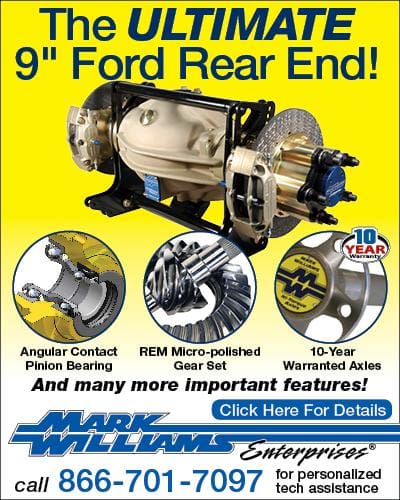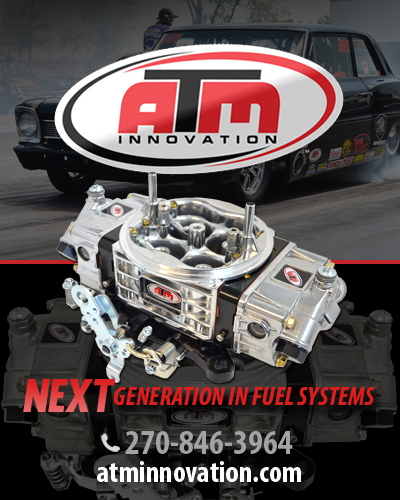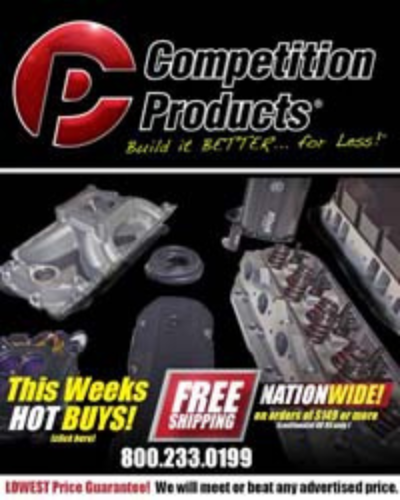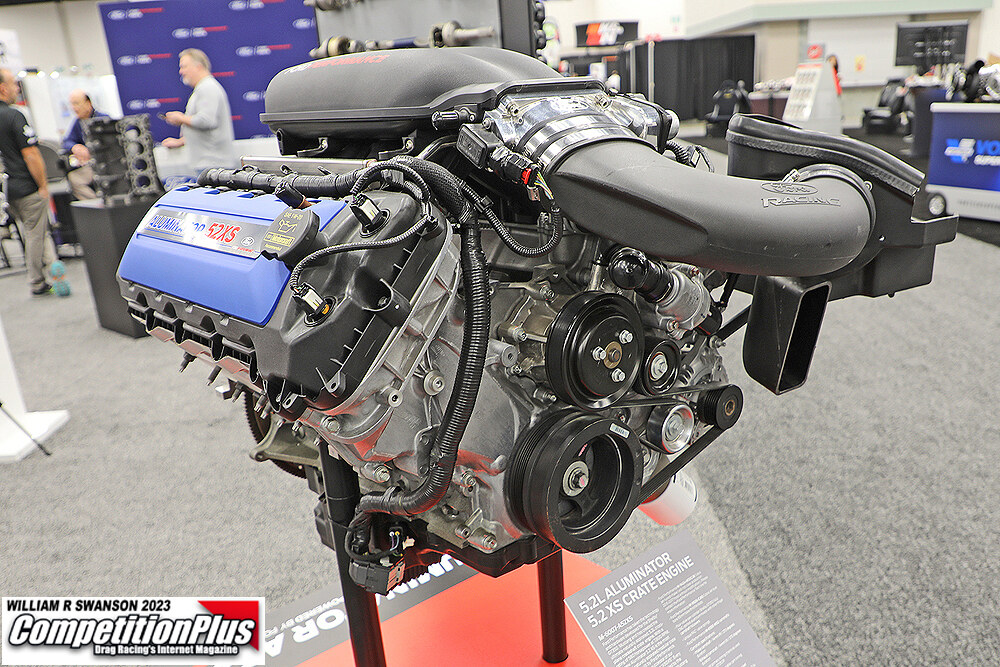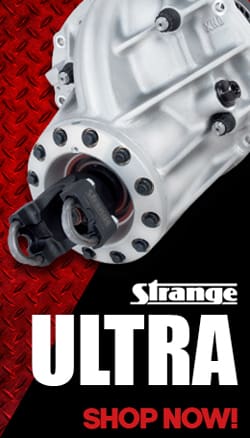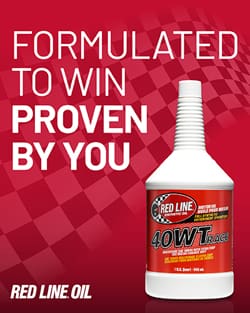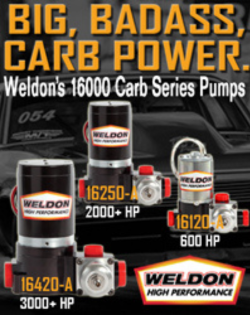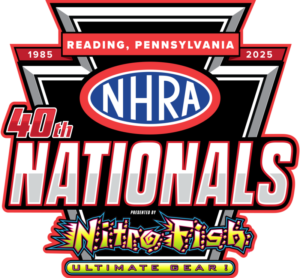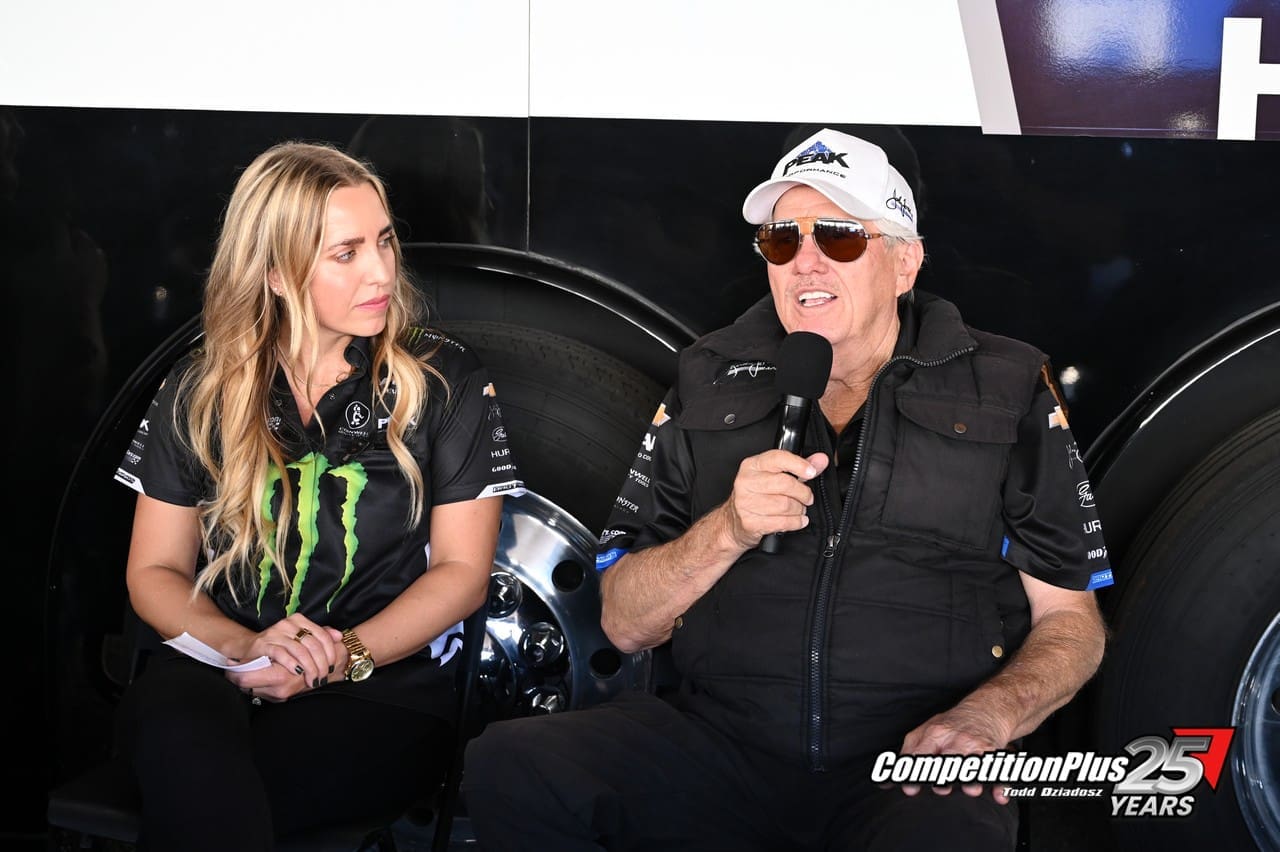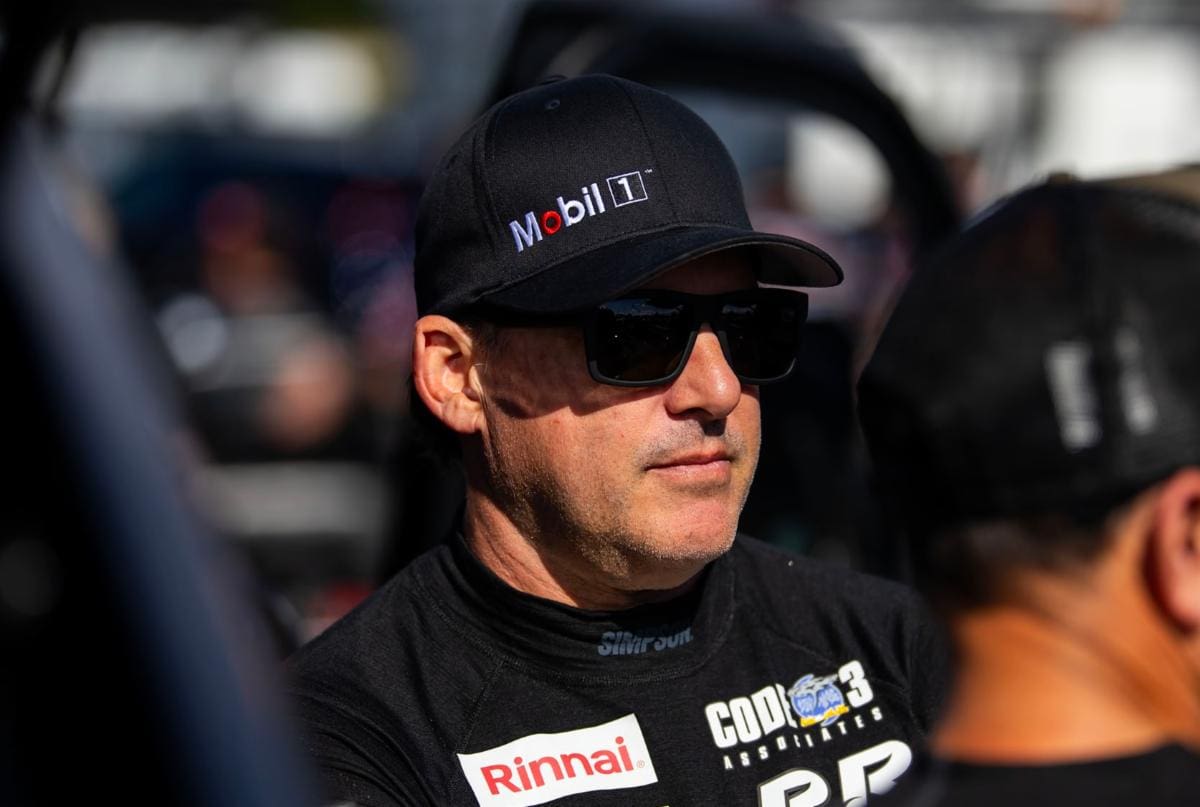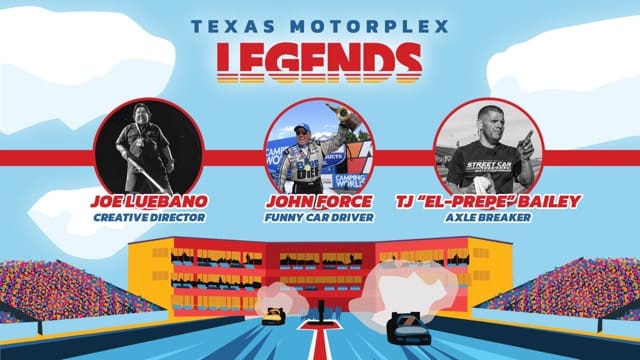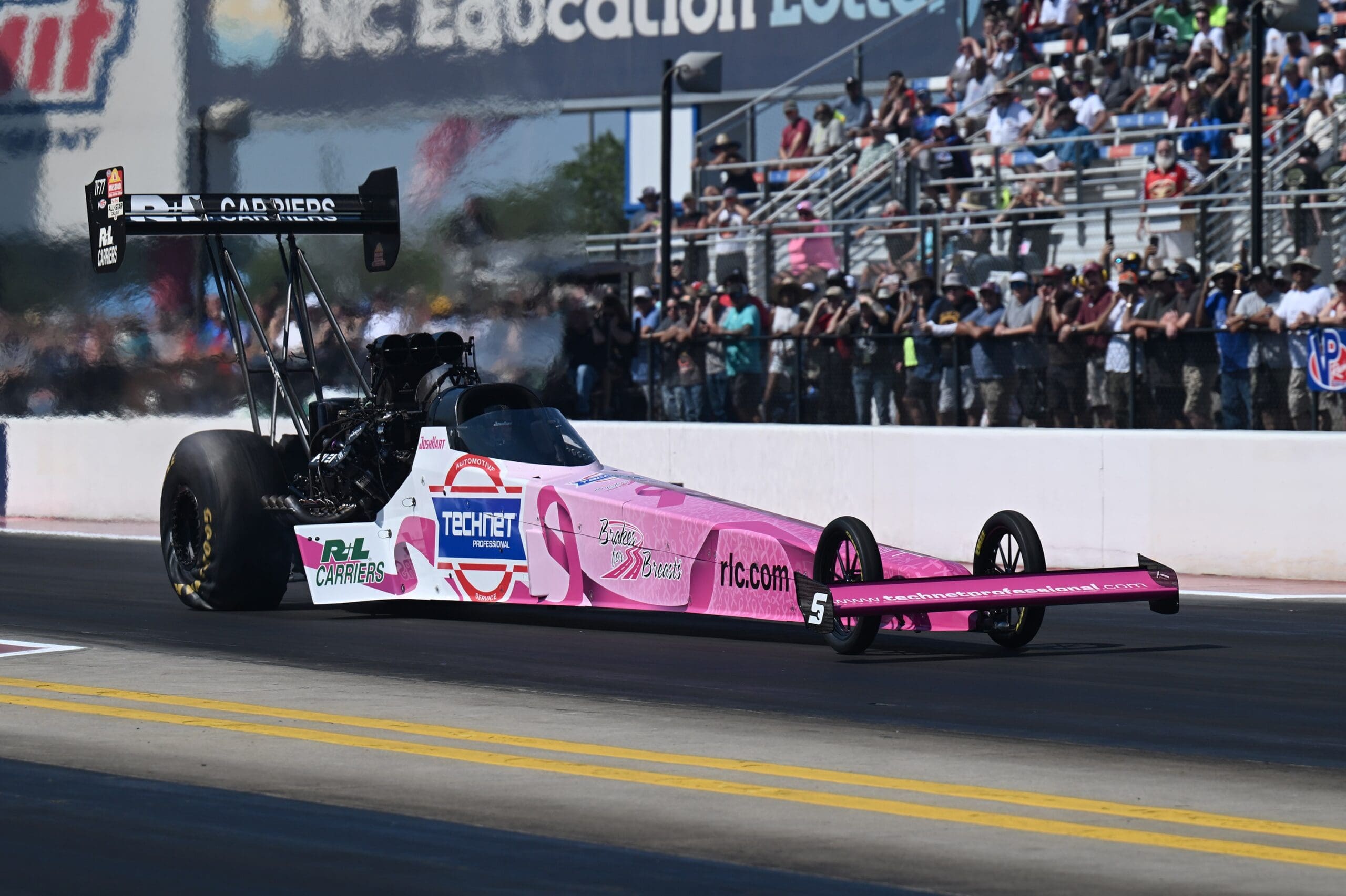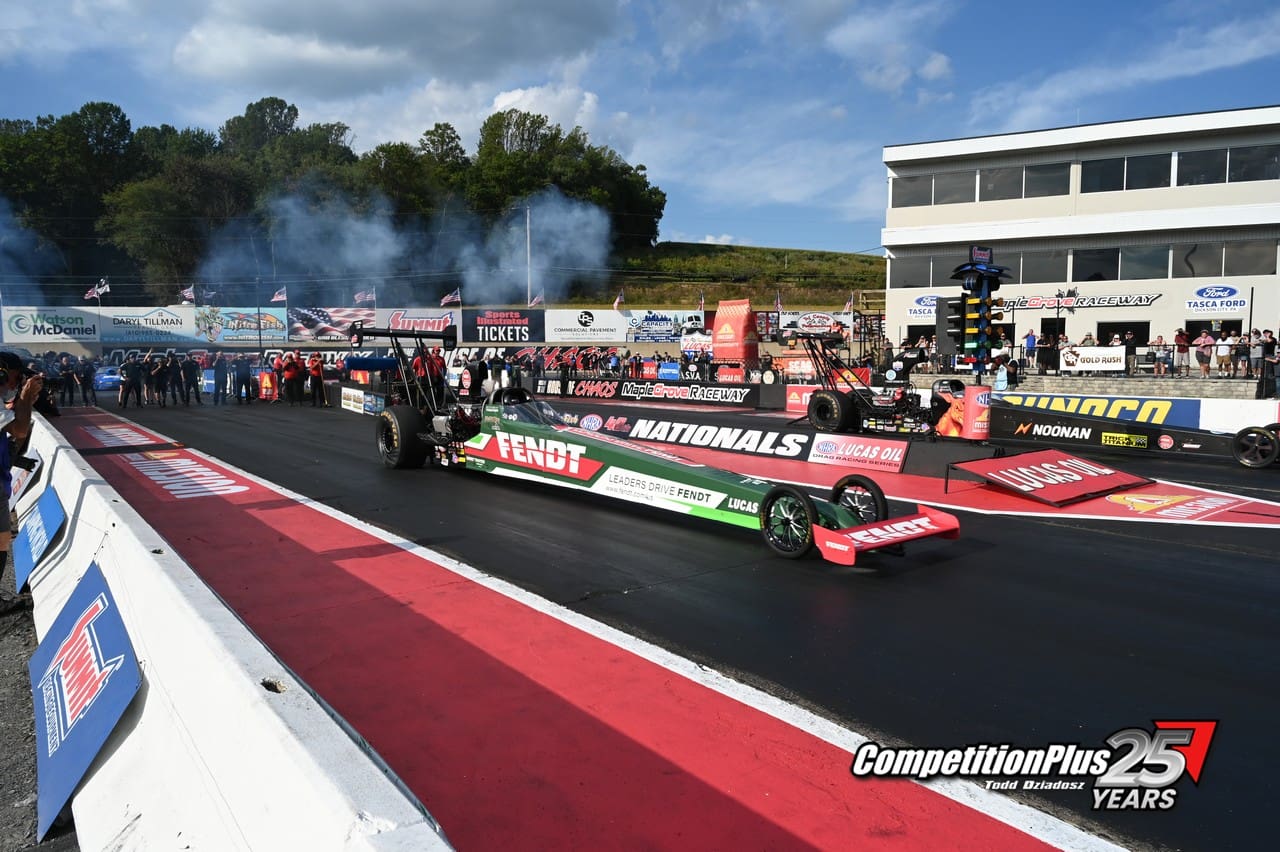
 Racing politics often plays a role in some of drag racing’s most popular drag racing events. In the case of the NHRA Summernationals, the one made famous by Old Bridge Raceway Park in Englishtown, NJ, and one of the originals of this gearhead Woodstock, was 100 percent political.
Racing politics often plays a role in some of drag racing’s most popular drag racing events. In the case of the NHRA Summernationals, the one made famous by Old Bridge Raceway Park in Englishtown, NJ, and one of the originals of this gearhead Woodstock, was 100 percent political.
Like many of drag racing’s best storylines, it began with an argument between NHRA founder Wally Parks and his sanctioning body archrival Larry Carrier.
This story goes back to 1965 when things started to go awry between Parks and the headstrong track operator in Bristol, Tenn.
“There were a variety of things that happened at Bristol that weren’t good,” noted drag racing historian Bret Kepner.
The Match Bash fiasco of 1965 was the first of the “things.” At the time, NHRA was starting to get a number of the altered wheelbase (early Funny Cars) to show up for their events. Typically, when race cars show up for an event, it’s not bad. But at this time, the often-rigid NHRA had no place for them to run.
Because these “Funny Cars” were either supercharged or injected and burned nitromethane, NHRA found them a home in CC/Fuel Dragster within Competition Eliminator.
“At that point, no vehicles other than dragsters could run anything but gas,” Kepner explained. “That’s why they were put into a dragster class.
Even if you ran alcohol, you got put into a fuel dragster class, whether it was an altered or a Funny Car.”
Carrier didn’t want these cars, now referred to as Match Race Stockers, in a dragster division. They could no longer be considered Factory Experimental because, as Kepner put it, “They were well past that point.”
Carrier lobbied for a field of them as a standalone category. By now, NASCAR legend Richard Petty was one of those who had a Match Race Stocker.
“Carrier just screamed at Parks. ‘You don’t understand. Nobody cares about dragsters down here,” Kepner recalled. “That’s all they want to see, is these match race cars.”
Carrier took the initiative and reportedly booked in a field of these Match Race Stockers and used time, not elapsed time, as his leverage to present the show. He waited until the last minute to reveal his actions citing, “Either they run, or there is no race.”

 The eight-car Match Bash show ran.
The eight-car Match Bash show ran.
“Of course, there’s very little information about it because Parks made sure that it wasn’t mentioned in National DRAGSTER or anything else,” Kepner added.
The field was comprised of such legends as Ronnie Sox and Shirl Greer, but Petty, who was one of the originals for the Match Bash, couldn’t even come close to the Injected Nitro cars and settled for running the B/Altered class, which he won.
The tensions were growing between the two headstrong promoters because of two aspects of the event. In 1965, the car count was down, and the spectator attendance, while not bad, was different from what they expected. There was more of the same in 1966, and by 1967, the relationship was fractured to the point of no repair.
In a redo of the Match Bash, Carrier pulled out of the NHRA series at the last minute, leaving Parks scrambling for a place to run the 1968 Springnationals.
The NHRA needed to make a splash, and instead of using a track as the focal point, they used the market.
“The way they spun it was, ‘NHRA makes a last-minute decision to go to the biggest market outside of Los Angeles, New York City,” Kepner said.
They needed the market as the hype tool because the facility was still being prepared to host a national event, much less the first one in 1968 on the East Coast. At the time, Bristol was as far east as NHRA went.
The race was a disaster mainly because of the heat and traffic issues.
The Springnationals was moved in 1969 to the new Dallas International Speedway, leaving Raceway Park off the schedule.
How desperate was NHRA to make a splash with their Springnationals failing in Englishtown and Bristol thriving under AHRA sanction?
Dallas needed more time to be ready to open for the 1969 event.
“Their track was barely finished when they ran the Springnationals there,” Kepner said. “They were still steamrolling the paved pits when they opened on Thursday.”
 A year later, NHRA expanded its schedule in what was described as the 1970 Super Season, including a new Summernationals event. There were two races in Dallas, one in Pomona, one in Ontario, Ca., Indianapolis, and the new Summernationals was in York. Pa.
A year later, NHRA expanded its schedule in what was described as the 1970 Super Season, including a new Summernationals event. There were two races in Dallas, one in Pomona, one in Ontario, Ca., Indianapolis, and the new Summernationals was in York. Pa.
“York was a good race, but York also couldn’t handle very much of a crowd,” Kepner said, adding the event was his first personal NHRA nationals. “Maybe the place seated maybe six or 7,000, which was one of the biggest at the time. No question about it.”
One of the most significant problems about the York event was an attendance problem, but not from spectators. Only ten Funny Cars showed up for the inaugural event because many of the teams were match racing elsewhere. Even “Jungle” Jim Liberman was not there because he was match racing at Maple Grove Raceway, just 40 miles away.
Don Prudhomme and Tom McEwen weren’t there because they were match racing in Union Grove, Wi.
“The bottom line is [York] wasn’t a very good show,” Kepner said. “Top Fuel drew a full field. Pro Stock was a massive field. The one thing that really did well when they went into the Northeast was Pro Stock. There were over 50 cars in Pro Stock, and the Sportsman fields were solid, but York, really, it was an airport, but it didn’t have a hell of a lot of space around it, and it wasn’t very accessible.”
 With the season off, the Napp Family reinvested in Raceway Park, which made its return in 1971. Most noticeable to the contestants was a 50-percent increase in the paved pit area and the roller starters. From a spectator standpoint, according to an NHRA news release, there was a 30-percent increase in permanent grandstands, and temporary bleachers were erected to augment the permanent facilities.
With the season off, the Napp Family reinvested in Raceway Park, which made its return in 1971. Most noticeable to the contestants was a 50-percent increase in the paved pit area and the roller starters. From a spectator standpoint, according to an NHRA news release, there was a 30-percent increase in permanent grandstands, and temporary bleachers were erected to augment the permanent facilities.
The Summernationals were held on July 16-18, with additional lighting to allow Friday’s and Saturday’s qualifying sessions to extend into the evening.
AHRA was already running in the New York market with an annual event at New York National Speedway on New York’s Long Island.
While the facts didn’t always support it, the Summernationals grew into what was considered one of the majors in NHRA events and thrived until 1992, when it was dropped in favor of a sponsored Nationals and moved to May.
The list of history made at the Englishtown NHRA Summernationals included a 1971 Stock Eliminator final when Judy Boertman beat her husband, Dave. A year later, 18-year-old Top Fuel racer Jeb Allen won Englishtown, becoming the youngest NHRA national event winner until former NHRA Pro Stock champion Tanner Gray beat it 45 years later.
There were a few performance milestones, such as Liberman winning his first and only NHRA national event and Mark Oswald finally beating Don Garlits’ seven-year-old 5.63 world record in 1982.
The Summernationals brand did time in Topeka, Kansas, before returning to Englishtown in 2013, where it had four years before the track stopped running drag races. there was a Summernationals ran during the Covid season at Indianapolis.
“Englishtown was a nice track, there’s no question that it was nice enough to have a national event, but it was purely a political deal,” Kepner confirmed. “NHRA didn’t have a choice but to go there in ’68, and it didn’t work out well. They eventually returned because they just had to have something in that market.”











